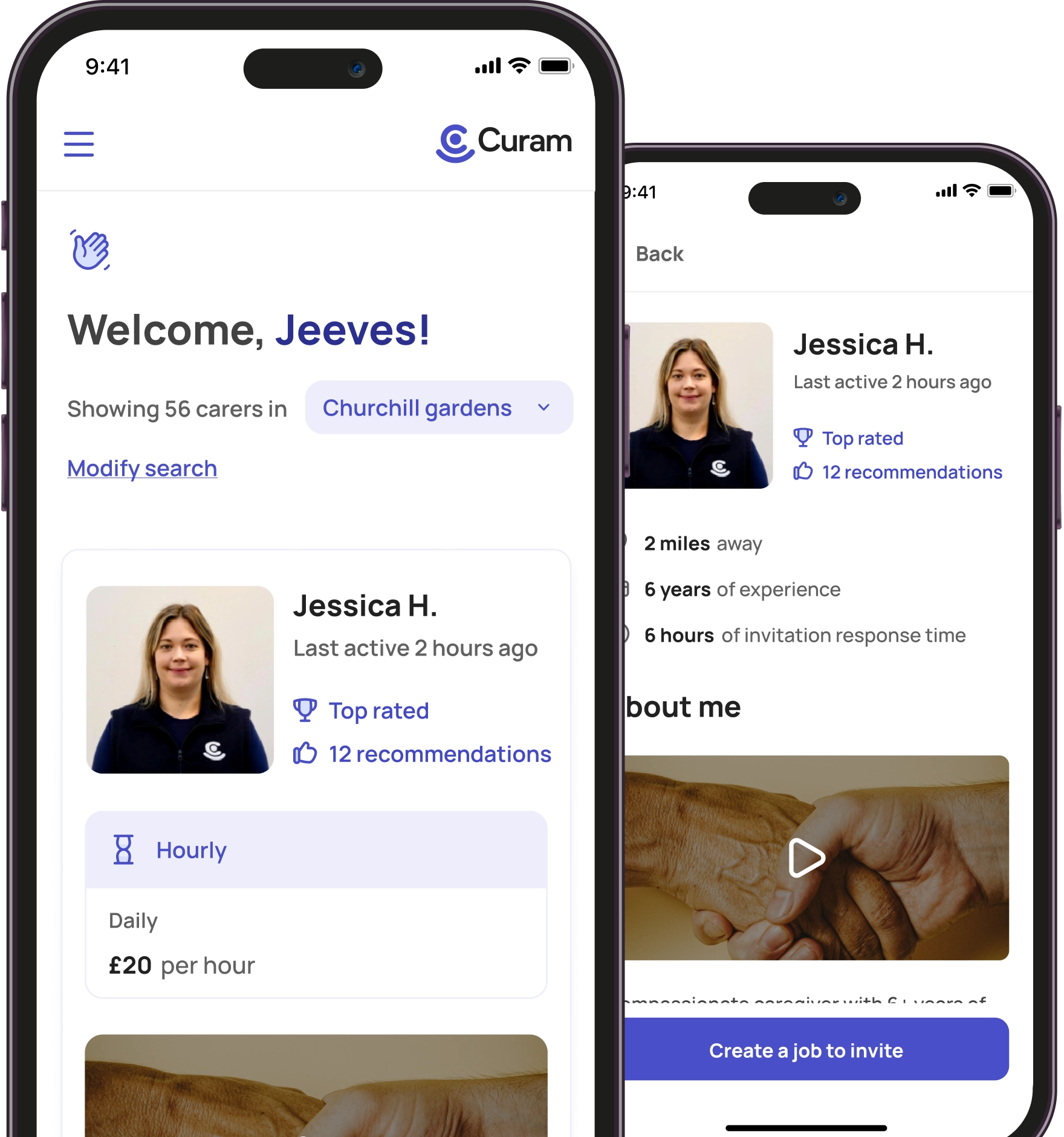Curam Team
September 26, 2025

1. What is a Stroke?
A stroke happens when blood supply to part of the brain is interrupted, causing brain cells to die. It can lead to lasting disability if not treated quickly.
There are two main types:
-
Ischaemic stroke – caused by a clot blocking blood flow.
-
Haemorrhagic stroke – caused by bleeding in or around the brain.
A TIA (Transient Ischaemic Attack), often called a “mini-stroke”, has similar symptoms but lasts only a short time. However, it’s a warning sign—those who experience a TIA are at higher risk of a full stroke.
2. Common Symptoms of Stroke (FAST Test)
The NHS recommends remembering FAST:
-
Face – Can they smile? Does one side of the face droop?
-
Arms – Can they lift both arms and keep them raised?
-
Speech – Is speech slurred or strange?
-
Time – Call 999 immediately if you see any of these signs.
Other symptoms include sudden vision problems, confusion, severe headache, or dizziness. Quick treatment saves lives and reduces long-term effects.
3. Stroke Recovery at Home
Many families choose to support loved ones recovering at home after hospital care. Home recovery can boost confidence, comfort, and independence.
-
Rehabilitation: daily exercises, physiotherapy, and speech therapy can be integrated into home routines.
-
Mobility: carers can help with safe transfers, walking, and preventing falls.
-
Nutrition: meal prep to support healthy diets and prevent issues like dehydration symptoms.
-
Emotional support: companionship reduces anxiety and helps with motivation during recovery.
4. When to Choose Home Care vs Care Homes
Families often search for “care homes near me” after a stroke. But staying at home with support is often the preferred choice.
-
Home care: best when your loved one wants to remain in familiar surroundings, supported by tailored visits or live-in carers.
-
Care homes: may be an option if 24/7 nursing supervision is required and home adaptations aren’t possible.
Curam helps you explore both options by connecting you with vetted carers in your area.
5. How Carers Help With Stroke Support
A trained carer provides specialist stroke recovery care at home, including:
-
Medication management and reminders.
-
Physiotherapy prompts – encouraging daily mobility and exercises.
-
Companionship – supporting speech practice and reducing isolation.
-
Daily living support – washing, dressing, eating, or toileting.
-
Monitoring symptoms – watching for signs of another TIA stroke or complications.
6. Other Related Health Conditions
After a stroke, people often face other conditions:
-
Oedema/swollen ankles – carers can help with mobility, foot elevation, and monitoring circulation.
-
Dehydration symptoms – ensuring proper hydration and nutrition.
-
Dementia link – strokes can increase the risk of vascular dementia.
-
Palliative care needs – in severe cases, carers provide end-of-life support at home.
Carers can also provide respite care, giving family members a much-needed break.






 Vetted & approved carers
Vetted & approved carers
 DBS checked & insured
DBS checked & insured
 Back
Back






